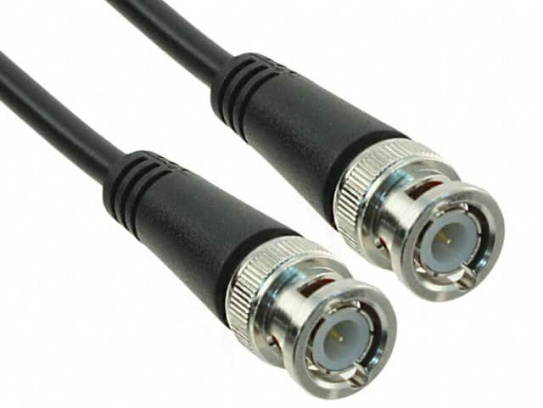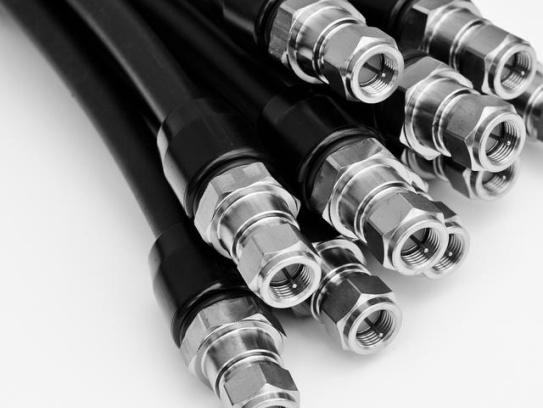Conductors: The Core of Signal TransmissionThe inner conductor is responsible for carrying electrical signals. Material choices prioritize conductivity, flexibility, and resistance to skin effect (signal loss at high frequencies). Common Conductor Materials:Oxygen-Free Copper (OFC):Advantages: High conductivity (≈100% IACS), low resistance, and excellent flexibility.Use Cases: Standard micro coax for consumer electronics (e.g., smartphone antennas).Silver-Plated Copper:Advantages: Silver’s superior surface conductivity mitigates skin effect losses above 10 GHz.Use Cases: High-fre.
Read more →The manufacturing of coaxial cables involves complex processes with inherent risks, from high-voltage testing to mechanical operations. As industry regulations tighten and technological advancements emerge, manufacturers are adopting comprehensive safety protocols to protect workers and ensure compliance. This article outlines critical safety measures being strengthened across the production chain. Addressing Electrical Hazards High-voltage dielectric testing, a standard procedure to verify insulation integrity, poses significant risks due to charge accumulation in coaxial cables. These cables a.
Read more →Coaxial cables have been a cornerstone of wired communication systems for decades, prized for their ability to transmit high-frequency signals with minimal interference. From broadcasting and telecommunications to military and aerospace applications, their unique design ensures reliable performance in demanding environments. Structural Advantages and Signal IntegrityThe coaxial cable’s layered construction is fundamental to its transmission properties: Central Conductor: A solid or stranded copper core (or aluminum alloy) carries the electrical signal.Dielectric Insulator: Surrounds the c.
Read more →5G’s Technical Challenges Addressed by 50μm Micro-CoaxA. High-Frequency Signal IntegrityFrequency Range: 5G FR2 (24–71 GHz) requires cables with minimal dispersion and skin effect losses.Performance Data:Parameter 50μm Micro-Coax PCB Microstrip (FR4)Attenuation @ 28 GHz 0.4 dB/cm 1.8 dB/cmPhase Variation (±°/m) 0.3° 5.2°Bandwidth DC–110 GHz < 40 GHzSource: Huber+Suhner Sucoflex® 100B datasheet B. Miniaturization and DensitySpace Constraints: Massive MIMO antennas integrate 64–256 elements per array; 50μm cables reduce interconnect cross-sectional area by 80% vs. 0.47mm coax.Exam.
Read more →Why RG6 is the Standard Choice RG6 coaxial cable is the preferred solution for modern satellite and cable TV installations because: Thicker conductor (18 AWG) minimizes signal loss over long distances Dense shielding (typically quad-shield) prevents interference from Wi-Fi/5G signals 75-ohm impedance matches TV equipment requirements Weather-resistant versions available for outdoor use Key Installation Tips Distance Matters: For runs over 150ft, consider RG6 with solid copper core instead of copper-clad steel Connector Choice: Use compression F-connectors – they provid.
Read more →Introduction The European Union’s latest regulatory changes (effective Q1 2025) are reshaping micro-coaxial cable production standards. These updates affect manufacturers, suppliers, and tech companies relying on these essential components for telecommunications, medical devices, and consumer electronics. Key Regulation Changes Material Restrictions: Phasing out PVC in cable jackets by 2027 New limits on heavy metals (lead, cadmium) in shielding materials Energy Efficiency Standards: 15% reduction in power loss requirements for high-frequency cables Mandatory efficiency la.
Read more →Can't find what you're looking for?
Our customer support team is ready to assist you with any questions or concerns.
Search FAQs
Related Articles
Are Coaxial Cable Assemblies resistant to environmental interference
The short answer is: yes, coaxial cable assemblies (CCAs) are inherently designed to resist environmental interference—but their effective.
Flexible vs. Rigid Micro Coaxial Cables
Key Differences Between Flexible and Rigid Micro Coax CablesParameter Flexible Micro Coax Rigid Micro CoaxBend Radius 5–10x cabl.
The Advantages of Micro Coaxial Cables in Medical Devices: Precision, Reliability, and Miniaturization
Medical devices are critical tools where performance, reliability, and patient safety are non-negotiable. As these devices become increasi.
What are the best practices for handling Coaxial Cable Assemblies
Coaxial cable assemblies are critical components in industries ranging from telecommunications and aerospace to medical equipment and indu.
Our Coaxial Cable Supports Long – Distance Transmission
In the rapidly evolving fields of medical imaging, industrial non – destructive testing, and scientific research, ultrasound technol.
Are Coaxial Cable Assemblies compatible with fiber optic systems
The question of whether coaxial cable assemblies are compatible with fiber optic systems is a common one among engineers, IT professionals.



